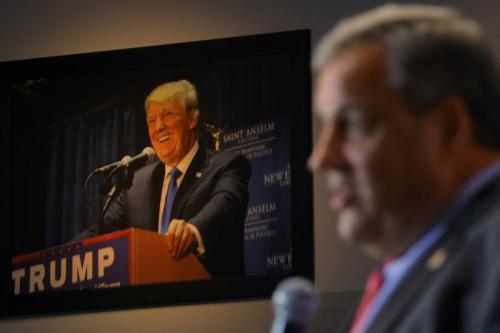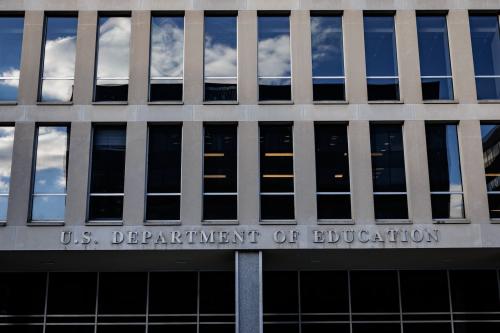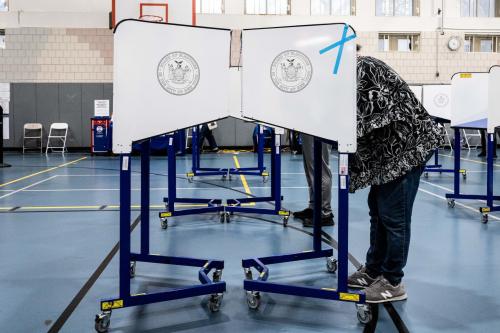Professor Lempert chaired the University of Michigan Law School’s committee that drafted the affirmative action policy at issue in Grutter. As Chair, he testified for the Law School in Grutter, and reporting on research showing the post law school success of Michigan’s affirmative action admittees, he also testified for the student intervenors in that case. He also wrote and submitted an amicus brief in support of the University of Texas at Austin in Fisher II.
Sometime in the next six weeks the Supreme Court will likely reveal its decisions in Students for Fair Admissions, Inc. (SFAI) v. President and Fellows of Harvard and SFAI v. University of North Carolina. Court watchers are almost unanimous that the Supreme Court majority will:
- read the 14th amendment as barring the use of racial preferences by public colleges and universities and
- interpret Section VI of the 1964 Civil Rights Act as similarly restricting race conscious admissions at any school receiving federal funds.
To achieve these outcomes a conservative majority will have to reject 40 years of a twice reaffirmed precedent as well as the likely intent of the framers of the 14th Amendment and of the Congress that enacted the Civil Rights Act. Given the leanings of six of the nine Supreme Court Justices and their prior rulings on race-related issues, neither of these jurisprudential principles is likely to matter.
Opponents expected to be celebrating affirmative action’s demise before now. In suits against the University of California Regents, the University of Michigan, and the University of Texas at Austin, they had Courts that leaned right, but in each case the most centrist of the conservative-leaning bloc refused to pull the trigger. Today the most centrist Justice, Chief Justice Roberts, is on racial matters well to the right of the Justices whose votes were pivotal in prior litigation. Moreover, his vote does not matter. The Court’s conservative wing now has 6 members, meaning there is no single swing vote.
Here are the most important cases leading up to the current litigation and a discussion of affirmative action’s educational impacts as I observed them while teaching at the University of Michigan.
DeFunis v. Odegaard: A Shot Over the Bow
Defunis was the first case challenging the constitutionality of racial preferences to reach the Court. It was dismissed as moot in 1974 because DeFunis, a University of Washington law school applicant, had been allowed to attend the school while he was suing it and was weeks from graduation by the time the Court’s opinion would issue. What surprised Court watchers was the view of Justice Douglas, perhaps the furthest left of the Court’s members and a staunch advocate for racial justice and equality throughout his career. In dissent, he emphasized the need for racial neutrality, leaving no doubt that he would have held the affirmative action plan at issue unconstitutional. Affirmative action has been on shaky ground ever since.
Bakke and Diversity: The Controlling Rationale
In 1978, a second case challenging the constitutionality of affirmative action reached the Supreme Court. Regents of the University of California v. Bakke established the precedent that for 45 years has allowed colleges and universities to engage in race-based affirmative action. The University of California at Davis medical school reserved 16% of its available places for applicants recommended by a special committee that reviewed applicants whose academic credentials were below, often substantially below, what the school ordinarily required for admission. Although whites could apply through that committee, no whites secured admission using this route. When the case reached the Supreme Court, four Justices favored striking down the program because it allowed for race-based preferences, while four Justices thought that the Davis Medical School could, consistent with the 14th Amendment, reserve a set number of places for minority applicants. Justice Powell, alone in the center, and with the support of four justices, ruled the Davis program’s numerical quota meant that the program could not withstand constitutional scrutiny. But he also wrote that creating racially diverse educational environments was a compelling state interest sufficient to overcome any constitutional bar on the consideration of race so long as race was only one among many factors that a school used in deciding whom to admit. He cited as a constitutional plan Harvard’s approach, which now seems destined for the Supreme Court chopping block. The four justices who would have held the Davis system constitutional agreed with Powell’s view that some use of race in college admissions systems was constitutionally permissible.
There was originally some dispute as to whether Powell’s idiosyncratic views were binding precedent since he wrote only for himself. However, this matter was resolved by later cases in which five justices endorsed his opinion. Interestingly, Justice Stevens, then only three years on the Court, was one of the four justices who would have voided the Davis plan. By the time he retired, he would have ruled the opposite way. Had he done so in Bakke, the diversity justification would not have been needed to justify an affirmative action plan’s constitutionality.
Following Bakke
After Bakke, diversity became a nationwide justification for affirmative action. Diversity concerns, however, had little to do with the institution of affirmative action at the school where I taught. Social justice concerns and the virtue of erasing what we would today call “legacies of slavery” were the chief motivating factors. Some of my erstwhile colleagues might add “avoiding violent protests,” but I do not think this was ever an important reason. Consistent with Bakke, the avowed goal of the school’s affirmative action program became enhancing diversity, but this did not immediately change the school’s approach to affirmative action or the reasons why most faculty valued increased minority enrollments.
Over time, however, effects of the change in rationale became noticeable along with manifestations of diversity’s educational value. A student-run journal on race and law was established. Courses focusing on racial and equality issues were invented and taught. More minority scholars were invited to give talks. The already high pressure to hire a more racially diverse faculty increased. Without the demand fueled by the school’s minority group students, not nearly as much of this would have happened. More than minority group students benefitted. Students of all races enjoyed new offerings and opportunities. White students, along with Blacks and other affirmative action minorities served on the journal of race and law; whites along with Blacks and others attended talks by minority scholars; and several Black faculty were among the school’s most popular teachers. Affirmative action also meant that those minority students with LSAT scores and GPAs that were in the same range as those of most white and Asian admittees felt far less alone in the school’s corridors and classrooms, which was perhaps a reason they flourished.
I was also struck by the value of diversity in the classroom setting, I was, for example, teaching evidence to a class of 110 students when the O.J. Simpson trial was dominating headlines. The trial was a godsend to evidence teachers, and class discussion regularly referenced issues that emerged at trial. About 15% of the students in that class were Black. As in the larger population, views about Simpson’s guilt largely broke along color lines. There were, however, enough Black students in my class so that some Blacks believed Simpson was guilty and some whites believed otherwise. The diversity within races enhanced conversation. In particular, Black students’ arguing for O.J.’s guilt freed white students to express similar views without fear of being accused of racism.
A few white applicants also benefitted from the school’s diversity policies. One year, when I chaired the admissions committee, we admitted a Bangladeshi with over-the-top recommendations from people we trusted and also admitted a white American woman who was a single parent, had worked as a waitress, returned later to college and achieved a 4.0 grade average. But the Bangladeshi had undergraduate grades and the woman an LSAT score which were considerably below the range of most admitted applicants. Each, however, had a history of accomplishments attained and obstacles overcome so different from those of most applicants that we wanted them at Michigan. I expect neither would have succeeded had Bakke not sensitized us to the value of diversity in assembling a law school class.
United Steelworkers v. Weber: The Force of Irony
A year after Bakke, an affirmative action issue in the employment context reached the Supreme Court. The Steelworkers case, the last unequivocal high court victory for affirmative action, grew out of an in-plant craft training program established to compensate for a history in which the union with rare exceptions excluded Black workers from craft training whatever their competencies. To rectify this situation, the union and management agreed to reserve 50% of future craft training slots for Blacks until their numbers reached what they might have been absent past discrimination. A white worker sued claiming that, but for the agreement, his seniority would have ensured him a slot. The heart of the dispute is encapsulated in dueling footnotes by Justice Brennan, who wrote the majority opinion, and Justice Rehnquist, who dissented. Brennan wrote:
“It would be ironic indeed if a law triggered by a Nation’s concern over centuries of racial injustice and intended to improve the lot of those who had ‘been excluded from the American dream for so long’ … constituted the first legislative prohibition of all voluntary, private, race conscious efforts to abolish traditional patterns of racial segregation and hierarchy.”
Rehnquist responded, “I see no irony in a law that prohibits all voluntary racial discrimination, even discrimination directed at whites in favor of Blacks. The evil inherent in discrimination against Negroes is that it is based on an immutable characteristic, utterly irrelevant to employment decisions.
The attractiveness of Rehnquist’s argument is obvious. His second sentence, applicable not just in the employment context, is what I grew up believing in the 1950s. Civil rights leaders taught this message, and it resonated when Black people were being denied the opportunity to attend schools with whites, were forced to sit in the back of busses, and were denied the right to vote. Weber arose at a different time, when color blindness could be wielded as a tool to institutionalize race-associated disadvantages that civil rights advocates of the ‘50s had hoped legal change would eliminate.
The irony that guided Brennan’s analysis is that Rehnquist’s rhetoric, reduced to its essence, is a claim made by a member of the dominant white majority that draws its apparent moral force from the nation’s collective horror at centuries of oppressing Black people deployed to outlaw programs aimed at overcoming legacies of that horror. Cases decided since Weber make it clear that there is little chance that the current Supreme Court majority will consider much less pay heed to that irony. Moreover, the attractiveness of color blindness in the abstract leads many people to oppose racial preferences, including some who might benefit from them. We do not, however, live in the abstract. The continuing costs of institutionalized racism, both implicit and overt, have been well documented.
Grutter v. Bollinger, and What Followed
Affirmative action’s opponents made several attempts to seek reconsideration of Bakke in the years following that decision. They came closest to success in 1996 in Hopwood v. Texas, a case brought by white students who had failed to gain admission to the University of Texas Law School. In Hopwood, the Fifth Circuit Court of Appeals, heartened by a number of Supreme Court decisions limiting attention to race in governmental decision making, declined to follow Bakke, and the Supreme Court denied review. For seven years, until 2003 when Hopwood was reversed by Grutter, race-based academic admissions was barred in the states of the Fifth Circuit: Louisiana, Mississippi, and Texas.
Grutter, which challenged the University of Michigan Law School’s admissions process and its companion case, Gratz v. Bollinger, which attacked the undergraduate school’s admissions process, were the next significant cases. The Supreme Court, with Justice O’Connor writing for the Court in Grutter and Chief Justice Rehnquist, who dissented in Grutter, writing in Gratz, upheld the law school’s admissions procedures but rejected the undergraduate school’s approach. The difference was that the law school had designed its system specifically to be Bakke compliant (a committee I chaired drafted the policy). It looked holistically at competing applicants. The undergraduate school, which received a far larger number of applications, relied on a system that gave points to applicants based on numerous factors, including minority status. The Court faulted the latter approach for ignoring individual characteristics and held that it was not sufficiently narrowly tailored to survive the “strict scrutiny” standard for evaluating racial categorizations under the Fourteenth Amendment. The split decision in the Bollinger cases caused no joy among those opposed to affirmative action. It meant that racial preferences in college admissions had survived.
Although Grutter is a reasonably straight-forward application of Powell’s opinion in Bakke, it has wrinkles worth noting. Justice O’Connor, whose vote decided the case, emphasized the importance of diversity not just in the university but in spheres of social life. She appeared to have been particularly influenced by amicus briefs submitted by military and business leaders, which argued that the availability of well-educated, racially diverse college graduates was essential to their organizational performance. Before Grutter, the idea that diversity was sufficient to constitute a compelling state interest was only one Justice’s view. Grutter made it Supreme Court precedent, with five Justices endorsing Powell’s position.
Moreover, while recognizing the value of diversity, Justice O’Connor declared that “[R]ace-conscious admissions policies must be limited in time” so as to ensure “all citizens that the deviation from the norm of equal treatment of all racial and ethnic groups is a temporary measure.” She cautioned that colleges and universities should continually reassess their admissions policies to see whether changed circumstances allowed schools to maintain diversity without affirmative action, and she expressed the expectation “that 25 years from now, the use of racial preferences will no longer be necessary to [achieve diversity].” Although some have seen in this language a mandate to terminate race-conscious admissions by 2028, O’Connor was expressing an expectation. Read literally she rested the termination of affirmative action on changed circumstances. One commentator has suggested that the current Court’s legitimacy maximizing option is to avoid overruling Bakke by endorsing O’Connor’s termination deadline and making it a mandate. I don’t see this happening. The Court’s conservative majority seems eager to declare race-conscious admissions dead as a matter of principle. For them race-based admissions have always been unconstitutional.
The final cases in the path to the Harvard and North Carolina cases involve a suit by Abigail Fisher challenging the University of Texas at Austin’s use of race-conscious admissions. The suit led to two Supreme Court decisions, each following a victory for the University in the Fifth Circuit court of appeals. After the first appeal, the Supreme Court remanded the case to the court of appeals suggesting that that court had not engaged in strict enough scrutiny. When the appellate court reaffirmed its earlier holding, the Supreme Court felt compelled to reach the merits. Hence Fisher II.
When the Court decided Fisher II, in 2016, one seat was vacant (Justice Scalia’s), and Justice Kagan had recused herself probably because before joining the Court, she had had a role in the Fisher I litigation as U.S. Solicitor General. Justice Kennedy was the swing vote in a 4-3 decision affirming the decision below. His opinion deals mainly with issues peculiar to the University of Texas admissions system. What it adds to prior precedent is mainly a reaffirmation of the notion that promoting diversity is a compelling state interest.
Conclusion
Almost from the start, race-based affirmative action has divided the Court as it has divided the nation. Key decisions have been decided by single justice majorities, with the swing Justice being the one closest to the center on the most politicized issues the Court addresses. The situation was not a heathy one, hinging as it did on one Justice’s views.
We see its effects in Bakke, which allowed affirmative action to continue while foreclosing most arguments that might have been made in its favor, thus pretermitting much that merits discussion. By the time of Bakke it was perhaps too late for a discussion of what the 14th Amendment’s framers intended with respect to racial preferences, but Justice Marshall made such an argument, which Justice Powell rejected, as he did issues of social justice.
One might fairly ask, why in a society where race-based biases, both implicit and explicit, hamper the life chances of Black and brown people more than others, do social justice concerns have nothing to say about the constitutionality of affirmative action? The situation is similar with respect to extended social benefits. Data show, for example, that minority lawyers are considerably more likely to serve minority clients than are white lawyers, and minority doctors are more likely to serve sick and injured minorities than are white doctors. Yet law schools and medical schools are unable to defend the constitutionality of racial admissions preferences by referencing such data. This is another path that Bakke barred.
Nonetheless the Justices appear poised to outlaw affirmative action. What the current Court majority cannot do is erase the benefits that have accrued to minorities in the half century that the nation has lived with affirmative action. We may not be at the point that Justice O’Connor envisioned, a point where colleges and universities enjoyed the full benefits of racial diversity without affirmative action. However, due in part to affirmative action, we have taken significant steps in that direction.
The Brookings Institution is committed to quality, independence, and impact.
We are supported by a diverse array of funders. In line with our values and policies, each Brookings publication represents the sole views of its author(s).







Commentary
The Supreme Court is poised to reverse affirmative action: Here’s what you need to know
June 5, 2023